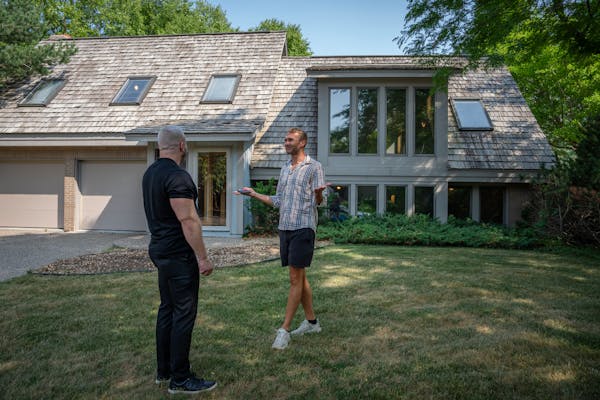Mortgage rates are at their highest level in more than two decades and house listings keep dwindling as people stay put, but there's one reason wannabe buyers shouldn't give up hope: Houses are taking longer to sell than they did last fall.
Last month, 5,663 listings hit the market across the Twin Cities metro, according to a monthly sales report from Minneapolis Area Realtors. While that's a 6.4% decrease compared with last year, there were also far fewer sales. The overall result is a slowing market churn.
In September, there were enough listings to last 2.3 months (a slight increase compared with last month and last year) and houses sold in 34 days on average (two days slower than a year ago).
"Many qualified buyers are finding success purchasing a home now and plan to refinance when the interest rates are lower," said Jerry Moscowitz, president of the Minneapolis Area Realtors, in a statement.
Those modest gains in favor of buyers come at a time when sellers have held most of the power. Even in the midst of the pandemic, sellers have called the shots as a flood of buyers hit the streets. As mortgage rates — and home prices — rose, listings dwindled, eroding the buying power of house hunters.
Pending sales were down 7.3% compared to last year in part because there were fewer buyers. Additionally, there were fewer sellers, stifling sales in every price range.
Closings — an indication of what was happening in the market two to three months ago —fell even more steeply, declining 17.1% compared with last year.
The median price of those closings in the Twin Cities area was $370,305, a 2.2% increase over the same period last year.
The decline in closings was largely driven by a decline in affordability fueled by higher mortgage rates.
Though mortgage rates are now near historic averages, they've ticked up in recent weeks. As of Oct. 12, the average 30-year fixed-rate mortgage was 7.57%, according to a weekly survey by Freddie Mac. A year ago, the 30-year averaged 6.92%.
"For the fifth consecutive week, mortgage rates rose as ongoing market and geopolitical uncertainty continues to increase," said Sam Khater, Freddie Mac's chief economist, in a statement. "The good news is that the economy and incomes continue to grow at a solid pace, but the housing market remains fraught with significant affordability constraints. As a result, purchase demand remains at a three-decade low."
Unwilling to trade their record low mortgage rate for a higher one, homeowners just won't budge. At the end of last month, there were 8,704 houses for sale, nearly 900 fewer than last year at this time.
"Many homeowners not experiencing a major life or job change aren't quite as motivated to make a move," Moscowitz said.
Statewide, the general trends were similar, but there were stronger gains in at least one key metric. The median price of all closings in September was $334,900, a 3% annual increase and the biggest gain since February, according to Minnesota Realtors, a trade group that represents real estate agents across the state.
The report, which tracks sales in various regions of the state, shows that homes sold in 32 days, 3% slower than last September and the only decline so far this year.
Sellers got stronger offers — 98.5% of their list price, a slight increase from last year, but with significant variations in buying and selling recorded across the state. The regions that include Alexandria, Detroit Lakes and Willmar all saw annual gains in pending sales with the biggest price gains happening in the Duluth/North Shore regions and in the Mankato, Bemidji and Brainerd areas.
The group said the areas that were most evenly balanced between buyers and sellers included Bemidji and Detroit Lakes, while the areas where buyers far outweigh sellers included St Cloud, Rochester and the Twin Cities metro. Homes took longest to sell in the Hibbing/Virginia and Mankato areas.
"While a few parts of the state and metro have seen sales softening, the fact that both buyer and seller activity have declined in tandem has kept the balance of the market fairly tight," said Emily Green, a metro-area sales agent and president of Minnesota Realtors. "One of the more puzzling pieces of today's market is how sales can slow as they have and yet prices remain firm."

Friends split a mortgage, share a home to beat high housing costs

